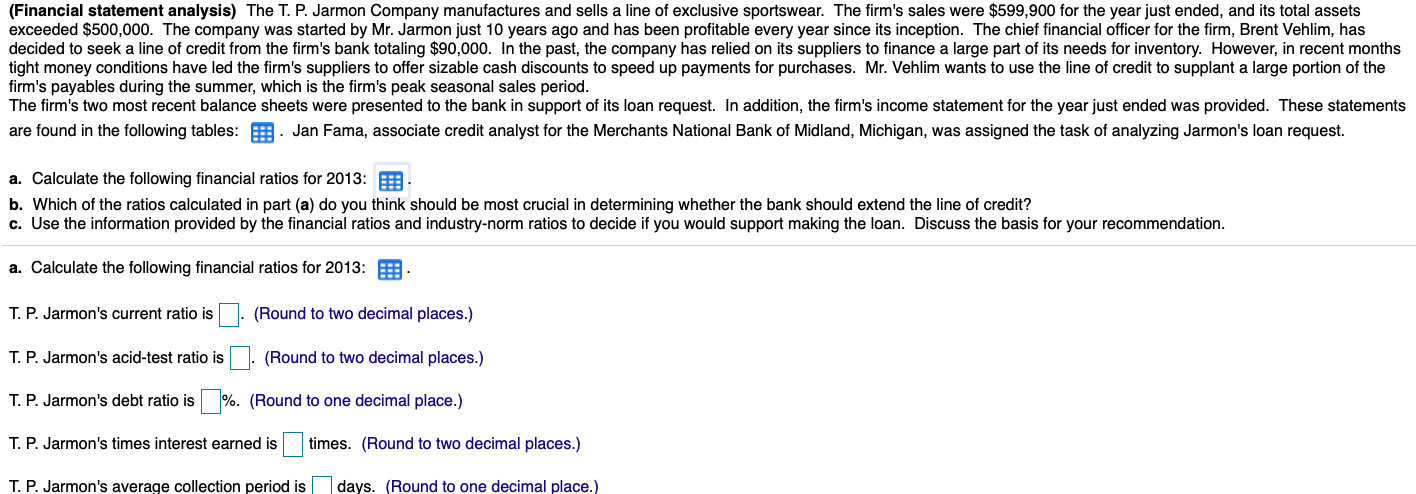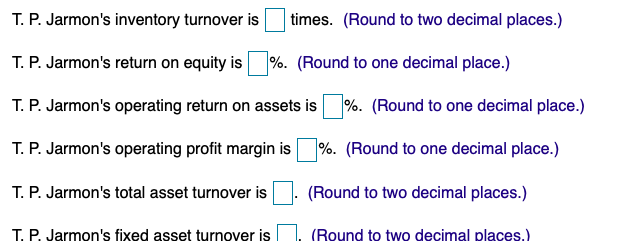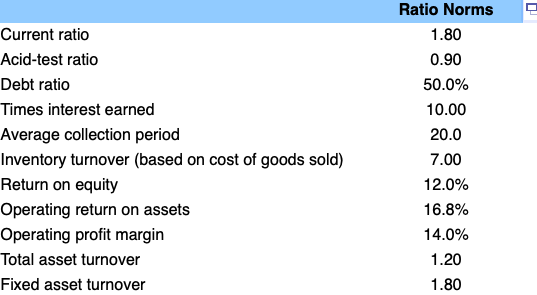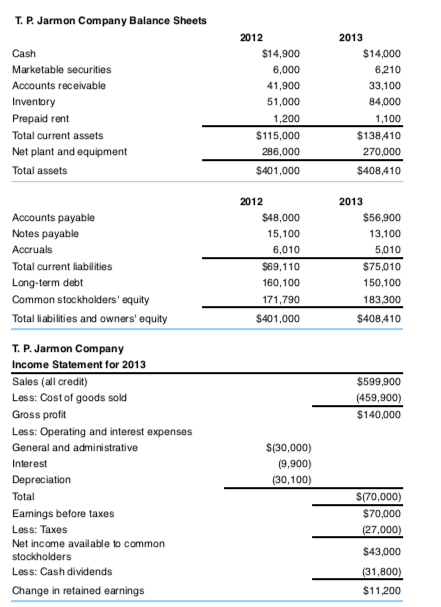





(Financial statement analysis) The T. P. Jarmon Company manufactures and sells a line of exclusive sportswear. The firm's sales were $599,900 for the year just ended, and its total assets exceeded $500,000. The company was started by Mr. Jarmon just 10 years ago and has been profitable every year since its inception. The chief financial officer for the firm, Brent Vehlim, has decided to seek a line of credit from the firm's bank totaling $90,000. In the past, the company has relied on its suppliers to finance a large part of its needs for inventory. However, in recent months tight money conditions have led the firm's suppliers to offer sizable cash discounts to speed up payments for purchases. Mr. Vehlim wants to use the line of credit to supplant a large portion of the firm's payables during the summer, which is the firm's peak seasonal sales period. The firm's two most recent balance sheets were presented to the bank in support of its loan request. In addition, the firm's income statement for the year just ended was provided. These statements are found in the following tables: 9. Jan Fama, associate credit analyst for the Merchants National Bank of Midland, Michigan, was assigned the task of analyzing Jarmon's loan request. a. Calculate the following financial ratios for 2013: E b. Which of the ratios calculated in part (a) do you think should be most crucial in determining whether the bank should extend the line of credit? c. Use the information provided by the financial ratios and industry-norm ratios to decide if you would support making the loan. Discuss the basis for your recommendation. a. Calculate the following financial ratios for 2013: H. (Round to two decimal places.) T. P. Jarmon's current ratio is T. P. Jarmon's acid-test ratio is (Round to two decimal places.) %. (Round to one decimal place.) T. P. Jarmon's debt ratio is T. P. Jarmon's times interest earned is times. (Round to two decimal places.) T. P. Jarmon's average collection period is days. (Round to one decimal place.) T. P. Jarmon's inventory turnover is times. (Round to two decimal places.) T. P. Jarmon's return on equity is %. (Round to one decimal place.) %. (Round to one decimal place.) T. P. Jarmon's operating return on assets is T. P. Jarmon's operating profit margin is |%. (Round to one decimal place.) T. P. Jarmon's total asset turnover is (Round to two decimal places.) T. P. Jarmon's fixed asset turnover is (Round to two decimal places.) b. Which of the ratios calculated in part (a) do you think should be most crucial in determining whether the bank should extend the line of credit? (Select the best choice below.) O A. Banks want to know whether the company will be able to service the debt and repay the principal, therefore the bank will pay close attention to the current ratio which is 1.85 as compared to the norm of 1.80. Profitability ratios are also of interest as they indicate a company's ability to repay the principal. O B. Banks want to know whether the company will be able to service the debt and repay the principal, therefore the bank will pay close attention to the debt ratio which is 55.1% as compared to the norm of 50.0%. Profitability ratios are also of interest as they indicate a company's ability to repay the principal. OC. Banks want to know whether the company will be able to service the debt and repay the principal, therefore the bank will pay close attention to the times interest earned ratio which is 8.07 times as compared to the norm of 10.00 times. Profitability ratios are also of interest as they indicate a company's ability to repay the principal. O D. Banks want to know whether the company will be able to service the debt and repay the principal, therefore the bank will pay close attention to the acid-test ratio which is 0.73 as compared to the norm of 0.90. Profitability ratios are also of interest as thev indicate company's ability to repay the principal. Ratio Norms Current ratio 1.80 Acid-test ratio 0.90 Debt ratio 50.0% Times interest earned 10.00 Average collection period 20.0 Inventory turnover (based on cost of goods sold) 7.00 Return on equity 12.0% Operating return on assets 16.8% Operating profit margin Total asset turnover 14.0% 1.20 Fixed asset turnover 1.80 T. P. Jarmon Company Balance Sheets 2012 2013 Cash $14,900 $14,000 Marketable securities 6,000 6,210 Accounts receivable 41,900 33,100 Inventory 51,000 84,000 Prepaid rent 1,200 1,100 Total current assets $115,000 $138,410 Net plant and equipment 286,000 270,000 Total assets $401,000 $408,410 2012 2013 Accounts payable $48,000 $56,900 Notes payable Accruals 15,100 13,100 5,010 6,010 Total current liabilities $69,110 $75,010 Long-term debt 160,100 150,100 Common stockholders' oquity 171,790 183,300 Total liabilities and owners' equity $401,000 $408,410 T. P. Jarmon Company Income Statement for 2013 Sales (all credit) $599,900 Less: Cost of goods sold (459,900) Gross profit $140,000 Less: Operating and interest expenses General and administrative $(30,000) Interest (9,900) Depreciation (30,100) Total $(70,000) Eamings before taxes Less: Taxes $70,000 (27,000) Net income available to common $43,000 stockholders Less: Cash dividends (31,800) Change in retained earnings $11,200












